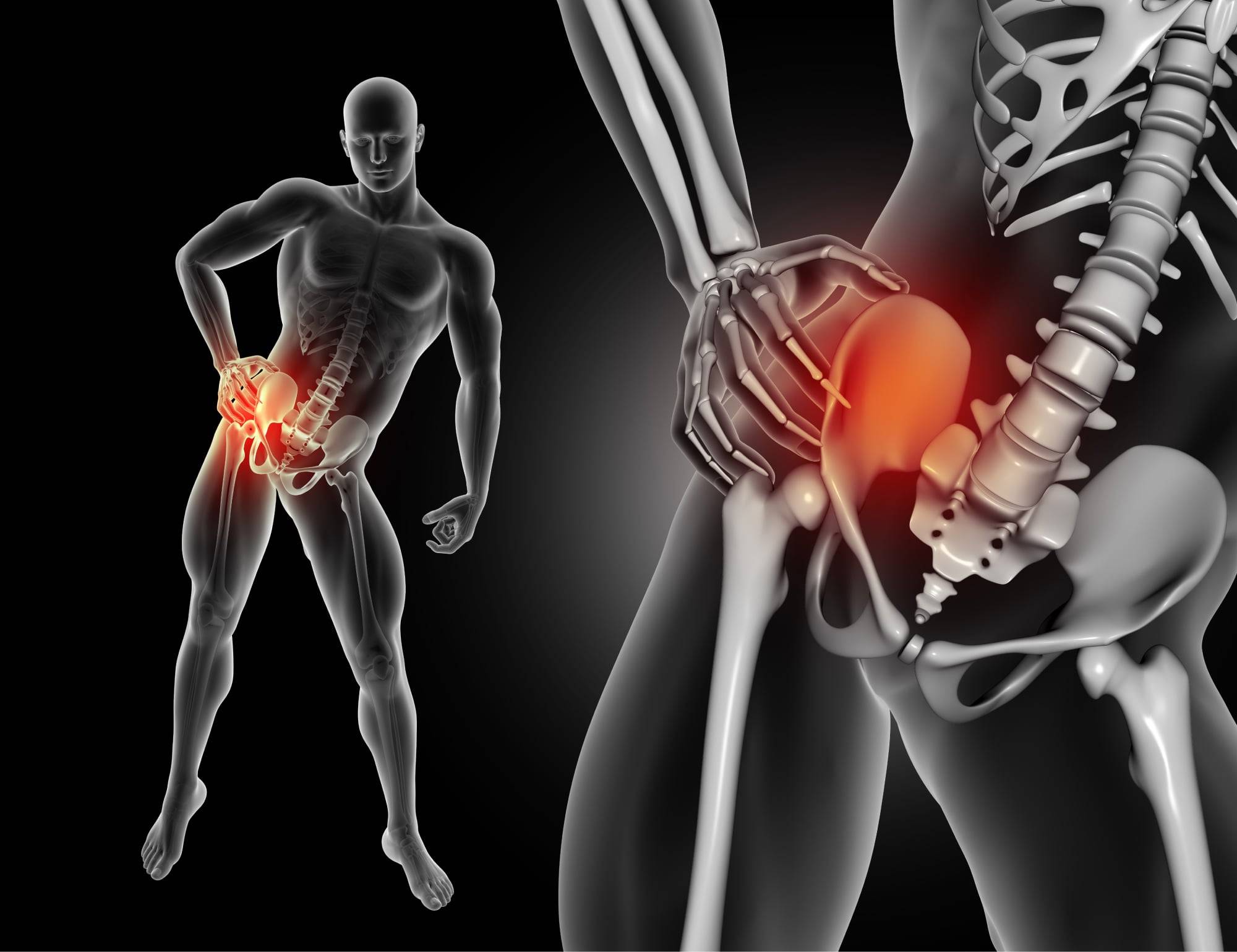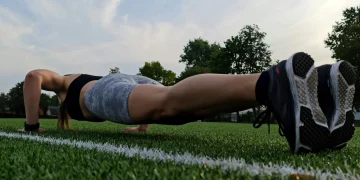Hip pain after running is common for both beginners and professional athletes. Moreover, numerous factors can contribute to hip pain, ranging from improper running technique to overworked muscles to serious medical conditions, such as bursitis or osteoarthritis.
If you’ve ever experienced runner’s hip pain, it’s important to learn as much as possible about hip anatomy, treatment, and prevention.
Hip Anatomy
The thigh is the part of the lower limb between the knee and hip joints. The head of the femur is attached to the pelvis by an articulation; the “ball” of one bone is inserted into the cavity of the other, thus providing maximum freedom of movement forward, backward, and sideways. The muscular frame of the thigh is represented by three muscle groups: anterior, medial, and posterior.
In addition to bones, muscles, and joints, there are also tendons that connect the muscles to the bones. They consist of dense fibrous tissue. Therefore they are characterized by high strength but low extensibility. This is one of the reasons for frequent cases of tendon ruptures in athletes.
The thigh is essentially one of the strongest but, at the same time, one of the most vulnerable parts of the body. An athlete that pays due attention to the development of the thigh muscles and strengthening of the tendons can train more safely as the workload increases. But excessively high and intense loads can still lead to the opposite effect – injuries and pain.
Hip Injuries after Running: Symptoms
According to Spire Healthcare, among the most common symptoms that signal problems in the hip area are the following:
- Limitation of limb mobility
- Pain when walking
- Drawing pain in the groin
- Hip rotation disorder
- Sharp/dull pain when turning or squatting
- Swelling of the thigh
- Pain when lifting/moving the leg
- Drawing pain when moving the leg
Localization of Pain
- Pain in the groin area, including in the buttocks, may indicate compression of the sciatic nerve or inflammation of the hip joint.
- A feeling of stiffness where the hip attaches to the pelvic bone often indicates osteoarthritis or rheumatoid arthritis. With limited hip mobility, an injury or the same osteoarthritis can occur.
- Pain in the anterior or posterior muscles of the thigh most often indicates the presence of an injury (especially if the pain is severe and acute) or, at best, indicates tensing after exertion.
What Causes Hip Pain from Running
Hip pain during running often indicates the presence of inflammatory processes and the development of an injury or medical condition. Below we will tell you about the most common medical conditions accompanied by pain in this part of the leg. However, keep in mind that only a qualified doctor can determine exactly why the hip joint or thigh muscles hurt after running!
Osteoarthritis
This degenerative disease often occurs in people of pre-retirement and retirement age. However, unfortunately, some medical conditions are becoming more common in “younger” people, so even if you are not yet 50, you should not immediately dismiss this option. The disease is characterized by wear and tear of the cartilage, which leads to the friction of the bones and causes pain.
Trochanteric Bursitis
This is an inflammatory process that causes damage to the trochanter. It is quite common with runners. The cause can be either infection or trauma. Attacks of pain are usually localized in the outer surface of the thigh. In addition to these pains, there is often a local increase in body temperature (in the joint area) and tissue swelling. Treatment of bursitis in the early stages is very easy (even using ointments), but if neglected and allowed to worsen, it could require surgical intervention.
Hip Dysplasia
This disease is characterized by joint instability, frequent dislocations, and subluxations. If dysplasia is left untreated, it will lead to osteoarthritis. But since the essence of the condition lies in an incorrectly formed or incompletely formed hip joint, non-surgical treatment with a high probability of restoring the normal functioning of the joint is possible, but only in early childhood. If the problem was discovered at a more adult age, then the progression of the disease can only be stopped by surgical intervention.
Hip Tendonitis
The most common cause of this disease is the impact of the feet on the surface when running or jumping, so hip tendonitis is often called a disease of athletes. The danger of this disease also lies in the fact that the signs increase gradually. So an athlete may not even be aware of the problem for quite a long time. In addition to pain, tendinitis is almost always accompanied by clicks in the joint and impaired abduction of the leg.
Abductor Strain
Of all the above medical conditions, this problem is most easily solved since it is not associated with inflammation. The cause of an abduction injury is overloading cold muscles or making sudden movements. In order to recover from an abductor strain, it is often enough to rest the hip and avoid physical activity for a while. Anti-inflammatory agents without a warming effect can also speed up healing.
Treatment for Hip Injuries after Running
The first thing to do if you experience any pain in the thigh is to rest the limb and consult a doctor for advice and diagnosis. Self-medication is not recommended for hip pain because you risk depriving yourself of the opportunity to run in the future. Of particular danger are fatigue fractures, which are quite difficult to diagnose even in medical institutions and absolutely impossible to determine at home.
Before making a final diagnosis and prescribing treatment, the doctor will refer you for an X-ray or MRI to get a complete picture of your injury. At the same time, the duration of the prescribed treatment directly depends on the severity of the injury and the resources of your body.
In mild cases, conservative treatment can usually be dispensed. At the same time, anti-inflammatory drugs are often prescribed in the form of injections to increase efficiency and speed up recovery.
In severe hip diseases, surgery is often necessary. So if you experience the slightest discomfort in the hip area, it is better to contact a specialist in order to identify the problem in a timely manner and find the best solution without resorting to extreme measures.
In the case of sprains, it is quite enough to rest the leg, apply ice (in no case heat!), and use anti-inflammatory and healing ointments or gels without a warming effect.
Preventive Measures: Exercises for Hip Pain from Running
To prevent runner’s injuries, special attention should be paid to strengthening and developing the flexor muscles. The following exercises will help increase the elasticity of these muscles:
Plank with Alternating Leg Raises
In this version of the plank, you will gently stretch the hip flexors while strengthening the muscles of the core and glutes.
Vertical and Horizontal Scissors
When doing this exercise, make sure that the lower back is firmly pressed to the floor. Otherwise, you risk back injury.
Deadlift on Straight Legs (with Bar)
It is important to grab the bar at a distance slightly more than shoulder-width and not round the back.
If you feel excessive tension in your legs, you can self-massage to relax overworked or tight muscles. You can also use a rubber ball or roller for this.
Running can be a traumatic sport, so always do a proper warm-up and cool-down, follow the correct running technique, and contact a specialist if you experience even the slightest discomfort. Running done right will bring joy and good health!






